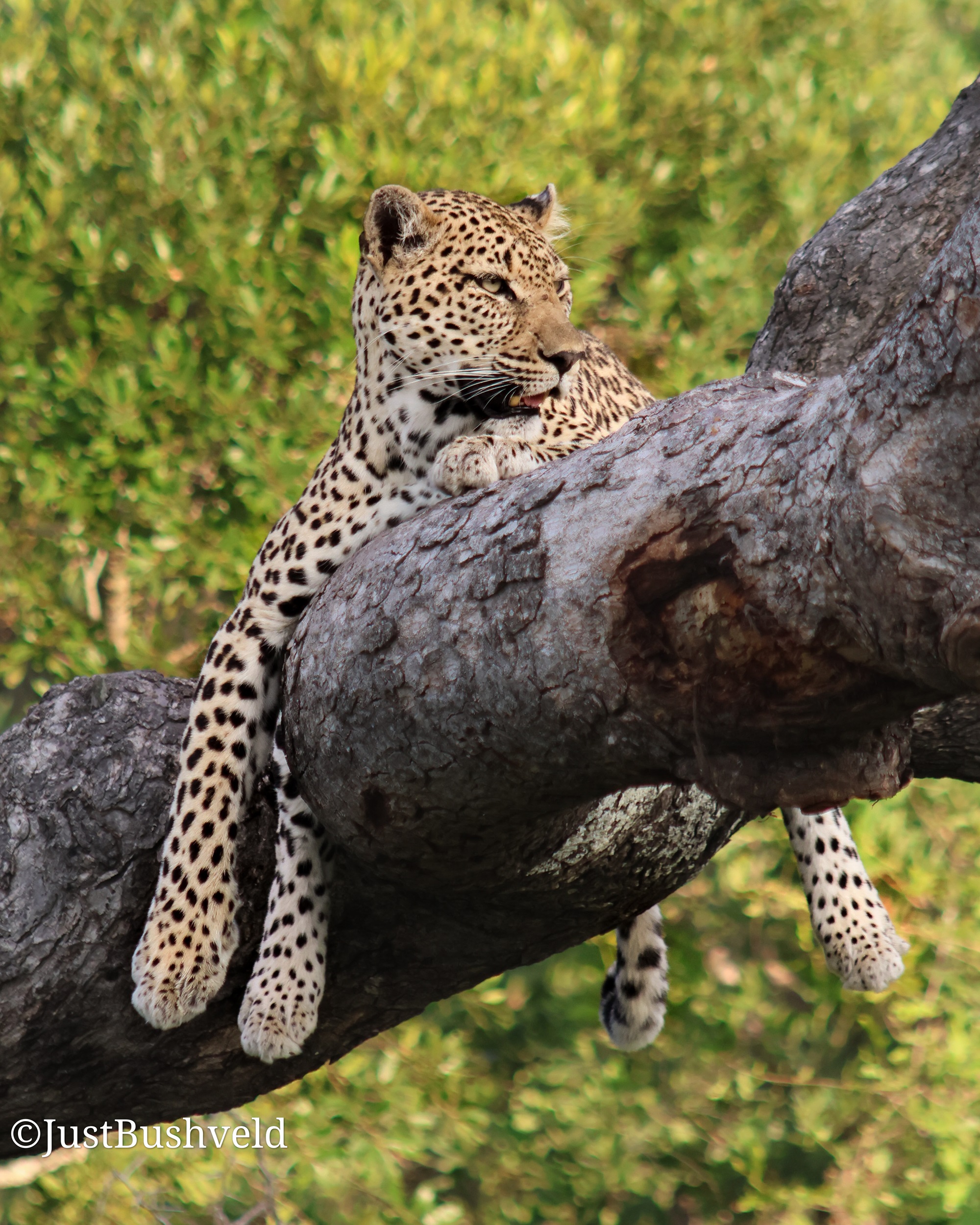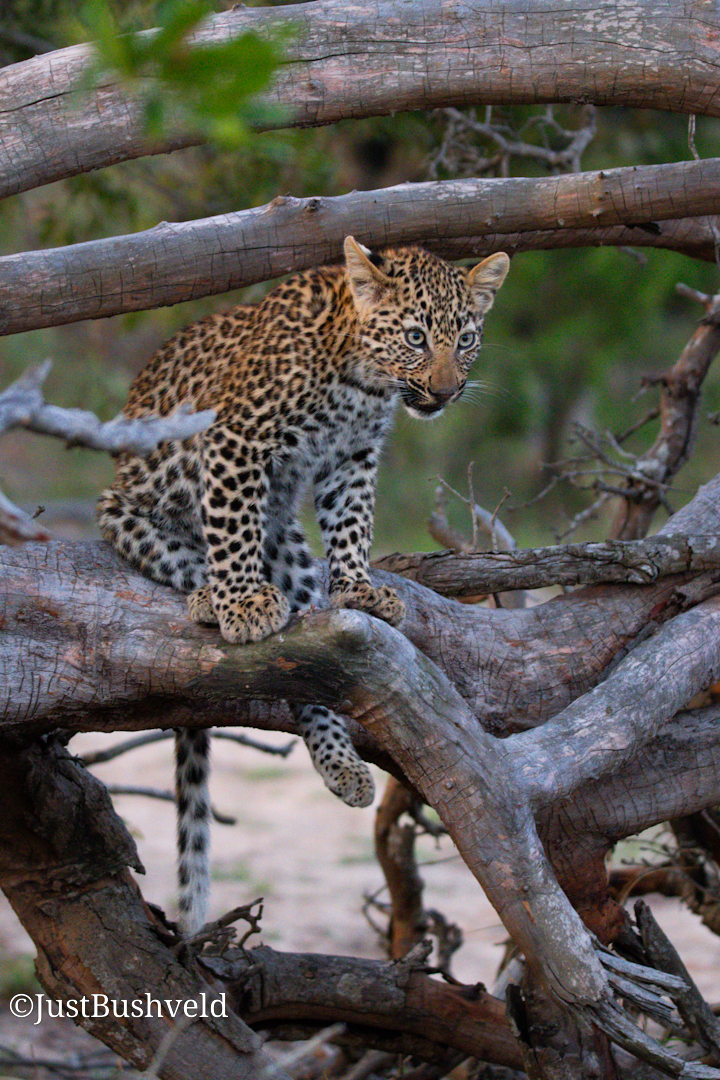Bush Bulletin: February 2024
February came and went faster than any of us could have thought. We were met with some rain in the early part of the month and then a sweltering heat wave clocking in over 40 degrees Celsius for a few days. All the babies during the summer season have grown and found their feet.
The Zebras and Wildebeest – Mowell
It’s been very hard to view zebra and wildebeest in the past 15-20 years within the Sabi Sands. Not that these animals weren’t here, but because of the huge lion prides that were around here. Most of the zebras and wildebeest were the main food source for the lions. Thanks to the Mapogo lion coalition for coming in and saving the lives of our beautiful zebras and wildebeest by killing about 100 lions in the Sabi Sands. That made a huge change and today we are able to view more zebras and wildebeest.
Even though we don’t see millions of them, it’s good to see a herd of approximately 30 zebras around Leopard Hills. The good thing is that our zebras and wildebeest don’t have to migrate because they have enough food in the Sabi Sands all year around.


Each and every time I come across a new-born zebra I celebrate knowing that the zebra population is growing and I know they are doing better when I don’t see any zebra kills very often. Every December our wildebeest give birth in numbers and to see them looking after their babies and watch them grow and increase the herd numbers is always cool.


African Monarch Butterfly – Johan
At the moment, we are seeing loads of these beautiful orange and black butterflies in the bush. These bright colours are not just pretty but also a warning to other animals that they are toxic.

Female monarchs only lay eggs on milkweed plants since monarch caterpillars only eat milkweed. The milkweed plant provides both food and shelter for a caterpillar for approximately two weeks (dependent on temperature) while it eats almost constantly, pausing only to shed its skin.

The monarch’s caterpillars eat the milkweed plants’ leaves to consume the cardenolides which is the chemicals in milkweed that makes the adult monarch butterfly toxic and bitter-tasting.
Colours of Summer – Cal
With summer being such a vibrant season as it is, there are plenty of things to look forward to both in and out of the lodge grounds. The bird life is at its peak and the colours and sounds are so distinctive.
One thing to take notice of is which birds stay after summer and which start to congregate to leave again as the season fades. Try and notice if you can see which birds prefer certain habitat types or where around the lodge certain birds are found or heard.


If you wish to learn more about birding, we provide a comprehensive bird checklist in the welcome pack and encourage birding during drives with our knowledgeable guides. We also provide ProItUp binoculars for ease of viewing.

Mr Ravenscourt – Stuart
The king of the Western sector is a very well-known and highly requested leopard to see, his name is the Ravenscourt Male.
Born in February 2012, Ravenscourt lost his mother at a very young age. Luckily his father, Kashane, was nice enough to let him stay within his territory and even share the odd kill.

Fighting his way to the top, Ravenscourt has become an extremely dominant male in the West. Well known for the massive amount of territory he can cover overnight, which makes him an incredible leopard to track and find by us guides.
He recently reached 12 years of age which is impressive within our area considering the density of leopards we have around.


Unfortunately age is not on his side and he has three males waiting for the opportunity to take over. Thamba from the East, Euphorbia from the North and Ravenscourts own son, Hlambela, who pops in every now and again to see how dad is doing.
Being at Leopard Hills for nearly 7 years has allowed me to watch this incredible male grow up, start fighting for territory, protect his territory and see his soft side when it comes to being around his cubs.
This handsome male’s name has travelled the world and he is by far the most requested leopard we have. Guests travel to Leopard Hills, fall in love with this stunning leopard, travel home and continue to talk about the legend that he is.
It has been an incredible road for this impressive male and I am blessed to be able to sit and be a part of this male’s life.

Basile’s Hope – Justin
Those of us who follow the many trials and tribulations of the leopards here in the Western Sector will readily tell you how the drama, heartbreak, joy and overall emotional turbulence around the leopards have an effect on us.
A very big character in the Soap Opera of this all is Basile. She has had, to the best of our knowledge, 9 unsuccessful litters so far. But there is hope in the form of her current cub, a tenacious young male sired by Euphorbia, who has already inherited all the confidence shown by both his parents.

Every day, all of us here in “The West” are ever hopeful that this is the one that could make it through to adulthood. The world could definitely do with a leopard that has the stunning looks of Basile and the muscle of Euphorbia.
Keep your fingers crossed and hold your thumbs for Basile and her boy.

If you’re interested in experiencing an awe-inspiring South African safari, please don’t hesitate to get in touch with our reservations desk at book@leopardhills.com.
Alternatively, click here and make use of the quick and seamless online booking process and start planning your ideal vacation today.
We look forward to welcoming you to Leopard Hills Private Game Reserve.





